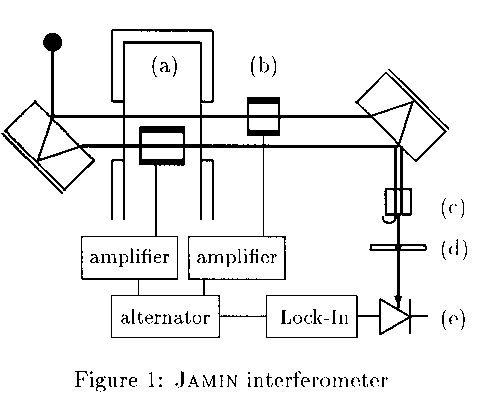
EXPERIMENTAL STUDY OF THE POCKELS EFFECT AND ITS TEMPERATURE DEPENDENCE
V. Wirth, H. Hellwig and L. Bohaty
Institute of Crystallography, University of Cologne,
Zülpicher Str. 49b, D-50674 Köln, Germany.
e-mail: wirthv@kri.uni-koeln.de
Keywords: Pockels effect, phase transitions
The linear electro-optic effect (Pockels effect) can be used as a sensitive tool for the study of structural phase transitions [1]. The Pockels effect describes the change in the refractive indices of a non-centrosymmetric crystal under an applied electric field. At the same time this external electric field induces a change in the dimensions of the crystal due to the inverse piezoelectric effect. Together, both effects cause a change in the path difference DG of a light wave travelling through a crystal sample:
DG = D Lni + L (Dni - 1) ''absolute'' change in retardation
DG = D L (ni - nj) + L (Dni - Dnj) ''relative'' change in retardation
The changes in the transmission length L depend on the piezoelectric effect, Dni and Dnj are functions of the electro-optic coefficients. To obtain the Pockels coefficients at different temperatures, the temperature dependence of the refractive indices, of the piezoelectric effect and the thermal expansion must be known. Our contribution presents and discusses two experimental set-ups for measurement of the linear electro-optic and the inverse piezoelectric effects and their temperature dependence. These methods are based on the determination of ''relative'' and ''absolute'' path differences. This is the classical way of Pockels [2], realized with new equipment.

Figure 1: Jamin interferometer
Absolute method using a Jamin interferometer (Figure 1): This technique compares a test wave through the crystal sample in the cryostat (a) (50 K to room temperature) with the reference wave controlled by a quartz crystal (b). Both crystals are driven with alternating voltages. A microscope objective (c) expands the interference fringes. The light which passes through a slit (d) is detected by a PIN-diode (e). The balance of test and reference wave is indicated by the Lock-In. A zero adjustment of the Lock-In ensures therefore an equal path difference between the known reference and the test wave.

Figure 2: Rotating analyzer
Relative method based on the Senarmont compensator, with a rotating analyzer [3] (Figure 2): The linear polarized light passes through the crystal sample in the cryostat (a), a l/4-plate (b), the rotating analyzer with chopper (c) and in (d) the light wave reaches the detector (PIN-diode). In this ``relative method'' a direct voltage drives the crystal sample. The change in the path difference of the light wave is directly proportional to the phase shift measured by the Lock-In (DG ~ D arctan(Y/X)).
To demonstrate the feasibility of both equipments for temperature dependent investigations we have measured two test crystals: KH2PO4 (KDP) and quartz. Furthermore, the new ferroelastic (NH4)9[Cu(S2O3)4] Br2 (222F4_2m) was characterized by means of the electro-optic and piezoelectric effect in the temperature range between room temperature and the phase transition at 165 K.